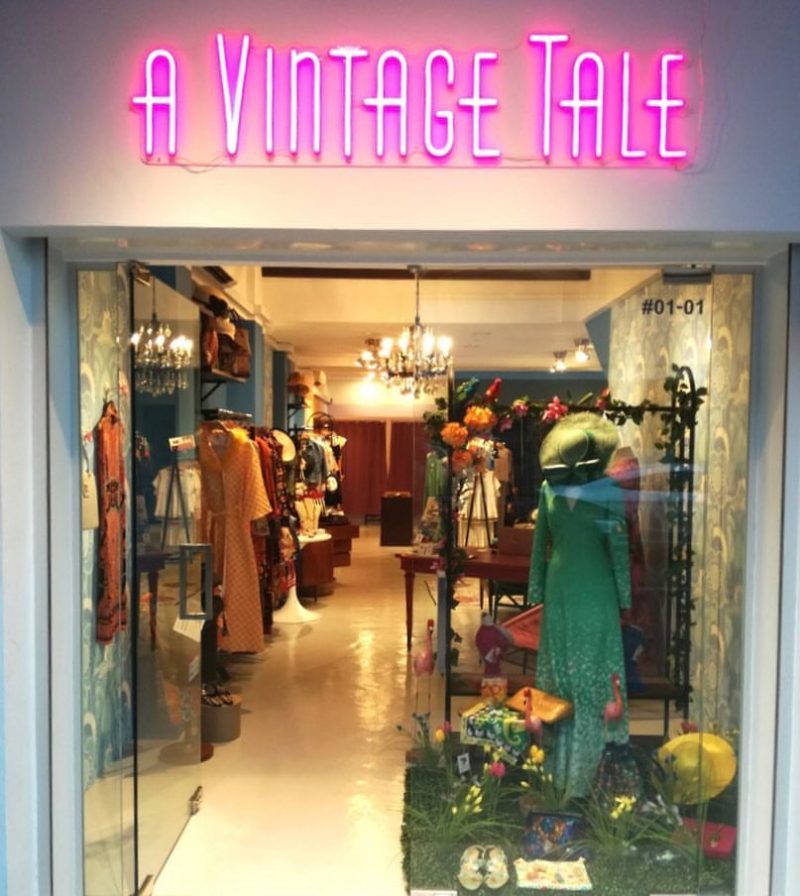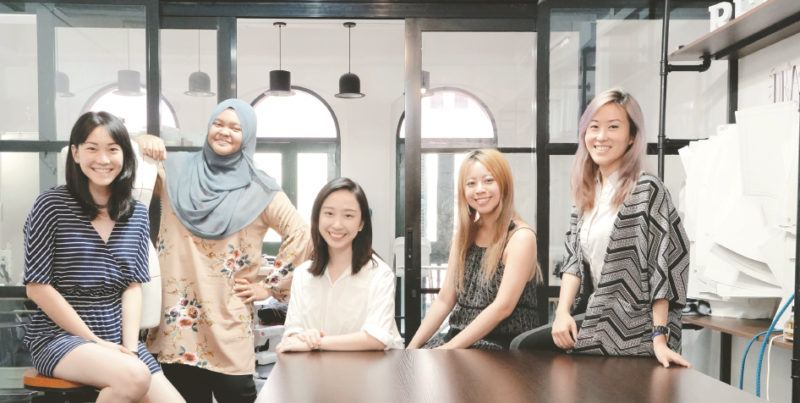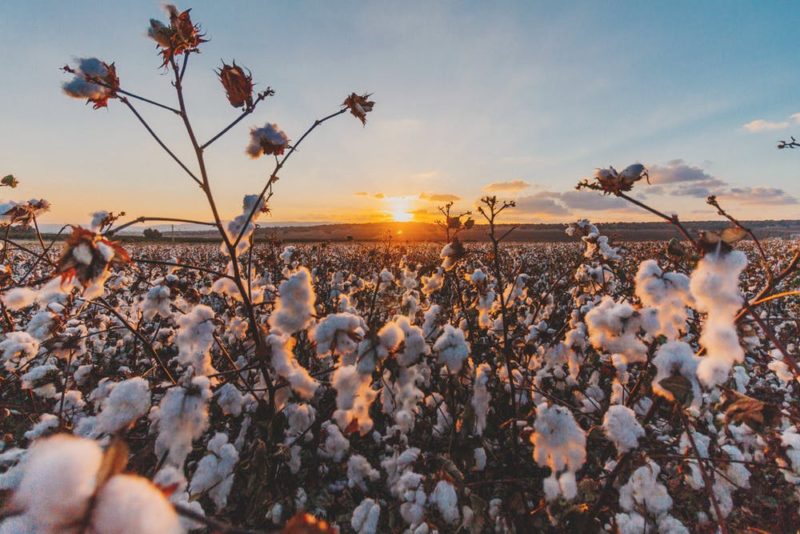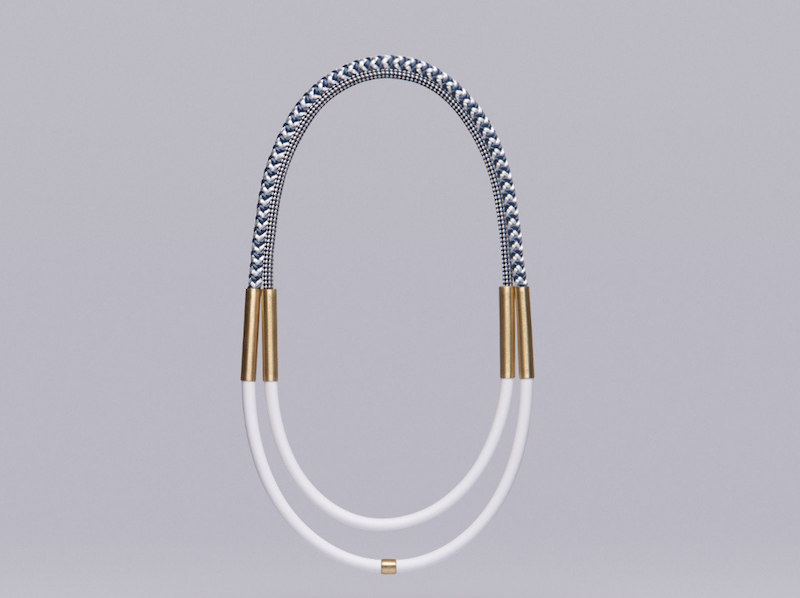Published 7 April 2019 ● Last Updated on 17 July 2020
This month’s guest post comes from Anisa Johnny, a Senior Fashion Marketing & Management lecturer at Raffles College of Higher Education Singapore. Anisa has a passion for creative fashion entrepreneurship and using fashion for social good. A champion of sustainability in the fashion industry, she understands the impact of the industry on the planet from a consumer, infrastructure and historical perspective. Anisa is an avid supporter of local creatives, championing good design, brand authenticity and mentoring young people to make a difference in society.
Sustainability is described as ‘avoidance of the depletion of natural resources in order to maintain ecological balance’. Therefore, sustainable fashion is creating fashion and lifestyle products that avoid not only the exhausting of natural resources but also harming individuals. A sustainable fashion brand is one that takes into consideration people, the planet and how the company uses finite resources when sourcing, producing and distributing their products. As consumers, we need to be aware of what brands are offering, their sustainable credentials and how they contribute to society.
My favorite closing joke when giving talks on sustainability in the fashion industry is that the best way to be sustainable is to go naked! In order for you not to fall foul of public nudity laws, here are some other practical ways in which you can be sustainable. You can choose one or all by voting with your wallet! My advice to you is that if you are just starting on your journey towards fashion sustainability, set yourself a target and try to do just one thing for one month; keep extending the time until it becomes a habit.
#1 Buy Vintage or Upcycled Products
Buying products that already exist is a great way to be sustainable because you are extending the product’s life by continuing to use it. Each time we buy something new, precious resources are used up, including water and land that could be utilized for agriculture to feed the population. The fashion industry, if laid end to end is one of the biggest industries in the world; starting from the raw materials that make fibers, which are then turned into textiles, to the dyeing and finishing of the textiles, to adding items such as buttons and trims and finally manufacture and distribution. At each stage of the production process, valuable resources are used. Plus carbon and other harmful gas emissions are released into the atmosphere. According to Greenpeace, it can take up to 2700 liters of water to make one cotton t-shirt and 7000 liters to make a pair of jeans!
No one wants to think about using up water when trying to get their next fashion fix but if you are environmentally conscious; buying vintage is a great way to be more sustainable. Some people complain about the lack of vintage stores in Singapore; not true! We have some great vintage stores in Singapore to choose from despite the shutting down of one or two recently. One of them is A Vintage Tale on Joo Chiat Road which has amazing statement pieces from the 50s and 60s, right up to the 1980s. Deja Vu Vintage in Millenia Walk Mall also has an excellent selection of vintage clothing. There are other brands in Singapore that take garments, textiles or accessories and upcycle them to create something new. It takes balls repurposes leftover fabric and creates knitted accessories thereby reducing waste. Parasolbag.com makes wonderful tote bags in many different colors from offcuts of parasol fabric.

#2 Make, Mend and Make Do
Another way to be sustainable is to make your own clothes or mend your clothing and accessories in order to ‘make-do’ with what you already have. Our attitude towards clothing has not always been about cheap throwaway fashion, in fact, ‘use and throw’ is a relatively new concept. Social and fashion historians have evidence that up until the late 70s and early 80s; people were more thrifty and items were worn and adapted for different family members until they were repurposed as rags or turned into patchwork quilts. Up until the 1980s, most American and European women made their own clothes and hand me downs were common. Anyone growing up at that time might remember, with not that much fondness, inheriting their siblings’ clothes and shoes, or mothers and grandmothers hand stitching clothes using readymade patterns from Simplicity or Vogue.
For those who are good with their hands or enjoy craft, there are plenty of sewing classes in Singapore where you can learn and appreciate the complexity of garment making. Fashionmakerspace.com offers sewing classes in central Singapore. They have short courses in garment construction or you can modify an existing item. Check their website for more details about the next course.

#3 Products from Recycled or Organic Materials
Conventional fashion is among the top five most polluting industries, alongside the oil industry. Creating fashion can harm the environment in various ways- to cite a few- through pesticides used when farming raw materials such as cotton, via chemicals used in the process of producing man-made textiles which can be toxic, in the form of mordant used to fix dyes being thrown out with wastewater. If this run-off water which contains dye chemicals is not disposed of correctly, it could end up polluting the main water system that is meant for drinking or bathing.
Products made from organic materials have become an ‘eco-friendly’ alternative to conventional fashion production. One of the most popular textiles is organic cotton. But how do consumers know if organic cotton is really what it claims to be? The best or most internationally recognized body is GOTS certified organic cotton. The Global Organic Textile Standard or GOTS certification ensures that at least 95% of the fabric is organic. It also ensures the company’s production processes, including fabric dyeing, meets environmental standards and other corporate social responsibility issues such as labor practices and good working conditions are met.
Other sustainable options include ‘greener’ fabrics such as linen which is a natural fabric made without the need for pesticides. Although it is man-made, Tencel claims to be more sustainable as the process uses natural materials like wood pulp. While bamboo is also considered sustainable as it is a renewable resource; some critics suggest that it uses up way too much water and energy to get the finished product.
Some fashion brands prefer to use recycled materials like fabrics made from recycled post or pre-industrial materials. Recycled textiles help reduce waste by giving a longer life to existing materials. Econyl is a relatively new fabric used in swimwear and sportswear which is made from nylon yard produced from industrial waste such as old fishing nets. In fact, all good design should be circular, not linear where the designers consider the product life-cycle such as what happens after the consumer has finished with it.

#4 Fair Trade, Social Enterprises and Socially Responsible Labour
Another way to do your bit for the environment is to buy products from companies that practice fair trade. Fair trade is the practice of paying the correct price for sourced materials to help ensure that producers (who are usually in developing countries) receive a fair price for their products. Some fashion brands exploit workers in developing countries knowing people will accept low pay and poor working conditions because they are desperate for work to feed their families. Garment workers are said to receive some of the lowest pay in the world. In Bangladesh, a hub for fashion production, the legal monthly wage according to The Guardian Newspaper is 8,000 taka a month which works out as GBP73 or approx SGD128 per month. Fair wage campaigners point out that a living wage for a worker in Bangladesh to survive comfortably would need to be at least 16,000 taka.
The food industry has recognized fair trade organizations such as the World Fair Trade Organization (WTO) which can verify the source of the produce. However, when it comes to fashion, it is almost impossible to know if a product is fair trade or not. Consumers often have to rely on what brands say about their sourcing, ethics or how transparent the brand is about their supply chain. Brands that source ethically are often more likely to be transparent. Transparency includes publishing the names of the suppliers or organizations they work with and inviting the customers to see production facilities by showing behind the scenes photos or videos and stating clearly how they are fair trade. The Baptist World Aid publishes an ‘Ethical Fashion Report’ which concerned consumers can use to check the practices of fashion companies. Top brands are given a grade based on their efforts to ensure their supply chain is ethical. The judging criteria include standards on child labor, forced labor, and exploitation.
With regard to social responsibility, some fashion brands’ entire business model is to create meaningful work for communities. A social enterprise is a company whose sole reason for existing is to benefit society. Social enterprises can be for profit or non-profit as long as they have a social focus. Therefore, fashion sustainability can also be a brand which has a mission to provide work for marginalized communities such as single mums, widows, ex-convicts, those with disabilities or those living in rural areas without access to any other employment. In most cases, the brand relies on the skills and expertise of the people whom they support.
Not only does making the product provide much-needed income but there is an intangible benefit to society which is hard to measure such as building community, individual purpose, camaraderie, and rehabilitation or integration into society. There are many Singapore based brands to choose from who have a social purpose such as the clothing brand Matter Prints which works with artisans in rural India, accessories brand Boheme Style Nomads which trains single mums in Singapore, Twin Within jewelry works with marginalized women in the Philippines and Eden & Elie, a jewelry company that trains people with autism in Singapore to make their products.

#5 Buy Less or Buy Better?
In my opinion, one of the most overlooked methods of being sustainable is to be mindful of your purchases. Wondering why buying less and thinking about what you buy is good for society and the environment? Clothing has become cheaper to produce over time, due to technological changes and production efficiency. Globalization also led to production facilities being moved to countries where the labour is cheap. These prerequisites led to the fast fashion business model in the mid to late 90s. At that time the industry celebrated the democratization of fashion – consumers could get cheaply made clothes and satisfy their need to keep up with international fashion at budget friendly rates.
Mass produced fashion is not always poor quality, however, the 90s fast fashion business model encouraged consumers to spend less money per purchase and the company made a profit from selling larger quantities. High volume and low margins and ‘built-in obsolescence’ is not unique to the fashion industry; however, it has had devastating effects. Built-in obsolescence is products made with low-quality specifications so they can be replaced more frequently to increase profits. Fast fashion, therefore relies on consumers purchasing more products to replace poor quality items over and over again in a never-ending cycle.
This cycle of producing garments at a fast pace is said to have changed the entire fashion industry. In order to keep up with consumers taste for the new fuelled by fast fashion, luxury ready-to-wear brands have increased their number of collections. The luxury fashion cycle has increased from the traditional Spring/Summer, Autumn/Winter to 4 and in some cases 8 to 16 collections per year. In 2015, designer Jean Paul Gaultier closed his ready-to-wear business to focus on only couture collections which are made to order. He was quoted as saying “Too many clothes kills clothes… Fashion has changed. A proliferation of clothing.”
Twenty years ago, very few people could predict the effects cheap fashion would have on society. As an industry, we could not foresee that there would be an exploitation of workers in poor countries to meet the low margins due to the developed countries demand for fashion at cheaper and cheaper prices. Today, we know of other negative effects such as clothes ending up in landfill and cotton growers suffering from pesticide-related health issues. Even dumped unwanted second-hand clothing has an effect that no one could have predicted. Donated items which charities are unable to sell are sent to poorer countries. In the process destroying that country’s local textile industry because foreign imported second-hand goods may be cheaper than locally produced garments.
The opposite of mass-produced products is, of course, designer fashion or better-made fashion which all consumers regardless of the budget should consider. Why is better-made fashion good for society? Firstly, better-made clothing should fit you better, should wash well and you should be able to keep the item for longer. Tom Cridland is a musician who has a menswear brand that offers a 30-year guarantee on their collection of basics.
Some people balk at the price of designer or better-made fashion; however, consider the price per wear rather than the price on the ticket. If a $50 dress only lasts one year and a $200 dress lasts 20 years if you calculate the number of wears you can estimate that in the long term, the cost is actually lower. When you factor in the cost to the planet, you realize your bargain item is not a bargain at all.
When you buy better made and more expensive items you are more likely to purchase fewer items. Marie Kondo, the writer of The Life-Changing Method of Tidying Up, has sparked an interest in consumers trying to understand their relationship with the things they own. According to a poll by Shopsmart, the average American woman owns 7 pairs of jeans and 25% of American women own 10 or more pairs. Compare this with the few garments owned by people in the developing world – who may have one garment they wear every day and one for Sunday best – the contrast is stark. We own more because items are cheaper but owning more items of clothing does not necessarily make us happier.
Conclusion
The effects of fast fashion are far-reaching. For example, there has been an increase in the price of vintage items in the UK due to the drop in the number of clothes that could be sold second hand. Growing up in the UK, you could go to any charity shop on your high street and find clothing from the 60s, 70s, and 80s and even as early as the 50s if you were lucky because those items were made of better quality. Today, most products bought from fast fashion brands end up being used as rags or in landfills because they are not fit to be resold. The items found in charity shops today are of distinctly poorer quality due to the cheap fabrics used to support the low price points. When I ask students who have just joined the course I teach, how long a garment should last; most say 6 months to 1 year. That is an alarming and dramatic change in society’s acceptance of quality and longevity of garments. My students are often surprised when I tell them I am wearing a vintage dress that is over 30 – 40 years old. Some have never seen garments that old.
Next time you buy an item think about the history of that garment, from where the materials were sourced, to the people who made the garment and how it arrived in the store before you purchased it. When you are tired of that garment consider where it will end up? Will it be reused by someone else less fortunate than you? Could a charity make much-needed income by reselling it, or will that garment end up in the landfill, which could take decades to decompose? Society’s relationship with clothing is changing and we all need to do our bit to understand if that change is good for the planet. Each individual should question if they really need the number of clothes they currently own. A sobering thought for the next time you need some retail therapy is just because you have the means to buy new clothes does not mean you should.
Liked the article? Follow Anisa on Instagram here as she chronicles her personal journey, thoughts about fashion and lots more!



0 Comments